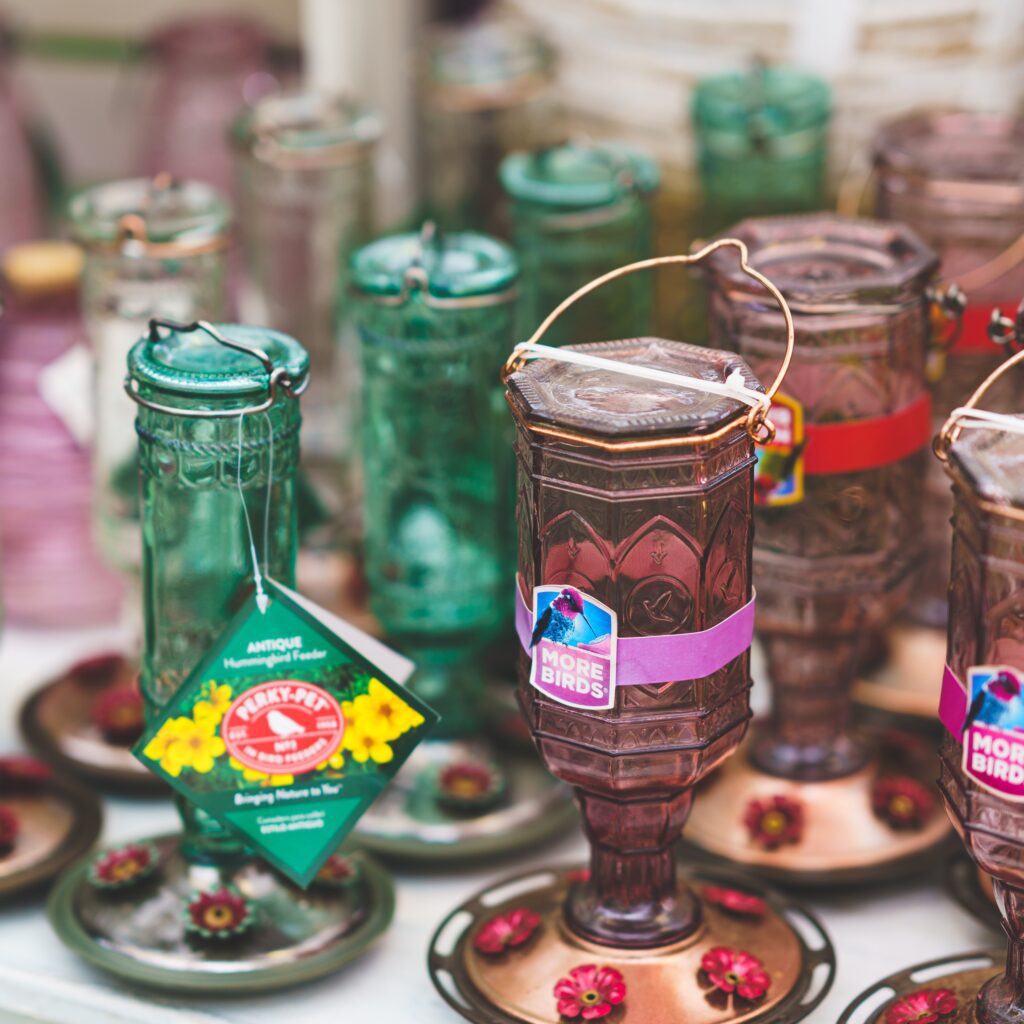June 19, 2023
Attracting Ruby-throated Hummingbirds to Your Garden
Seeing a hummingbird is always an exciting event! These tiny beautiful creatures who feast on the nectar of flowers are amazing to behold. Read on to learn more about the Ruby-throated Hummingbird (Archilochus colubris) that makes its home in Massachusetts.
Fast Facts
- Males have unmistakable glossy green feathers on their head and midriff and a stunning, glittering red necklace (hence the namesake).
- These brightly colored feathers around the throat of a hummingbird are known as a gorget.
- Females can be distinguished from the males because they do not have a gorget.
- Hummingbirds migrate in the spring, arriving in the Bay State in April and May.
- The ruby-throated hummingbird the smallest breeding bird in the state of Massachusetts.
- Is the only hummingbird species that breeds and nests in the eastern US.
- Hummingbirds use lichen, those crusty plantlike organisms found on tree bark, along with other fibers to form their nests and they cleverly hold it all together with spiderwebs!
- Their wings beat 53 times per second.
- Those fast-flapping wings burn a lot of energy so hummingbirds must eat more than their own weight in insects and nectar daily!

Hummingbird feeders.
Early Season Care for our Beautiful and Magical Friends
- Put feeders out in late April or early May until flowers in your garden can offer a source of food. (You can check out a selection of our hummingbird feeders here)
- To make a nectar, dissolve one part refined white sugar into four parts boiling water and be sure to let it cool before adding it to your feeder.
- Red dye isn’t necessary. It is neither helpful nor harmful – it is the color of the feeding port (usually red) that attracts the hummingbird.
- Clean the feeder at least once a week to prevent the growth of mold and bacteria.
- Hummingbirds eat both nectar and insects so if you see ants on the feeder, chances are the hummingbirds will take care of them.
- Provide a source of water for bathing – it’s another chance to observe them up close!
Planting a Garden to Attract Hummingbirds
Like us, hummingbirds appreciate a variety of flowers, from annuals in containers to tall perennial specimens. They especially like flowers that are tubular in shape and brightly colored.

Calibrachoa
Consider adding some of the following to your garden:
Annuals
- Agastache (red and orange varieties)
- Calibrachoa (both superbells and million bells)
- Cleome (spider flower – a good nectar source for hummingbirds and swallowtails butterflies)
- Fuchsia (a hummingbird magnet)
- Lantana
- Nasturtium
- Nicotiana (flowering tobacco)
- Petunias
- Salvia (especially fire cracker red)
- Sunflowers
- Zinnias (especially large size flowers)
Perennials
- Agastache (perennial varieties such as Blue Fortune)
- Asclepias (milkweed)
- Aquilegia (columbine)
- Baptisia
- Echinacea (coneflower)
- Heuchera (coral bells)
- Hibiscus moschuetos
- Lamprocapnos spectabilis (bleeding heart)
- Lobelia cardinalis
- Monarda (bee balm)
- Nepeta (catmint)
- Phlox
- Salvia (perennial varieties such as East Friesland and Caradonna)
Shrubs
- Azalea
- Buddleia (butterfly bush)
- Chaenomeles (flowering quince)
- Clethra alnifolia (summersweet)
- Lilac
- Lonicera (honeysuckle vine)
- Rhododendron
- Viburnum
- Weigela
If you want some tips for attracting other types of pollinators, you can check out our blog here!

